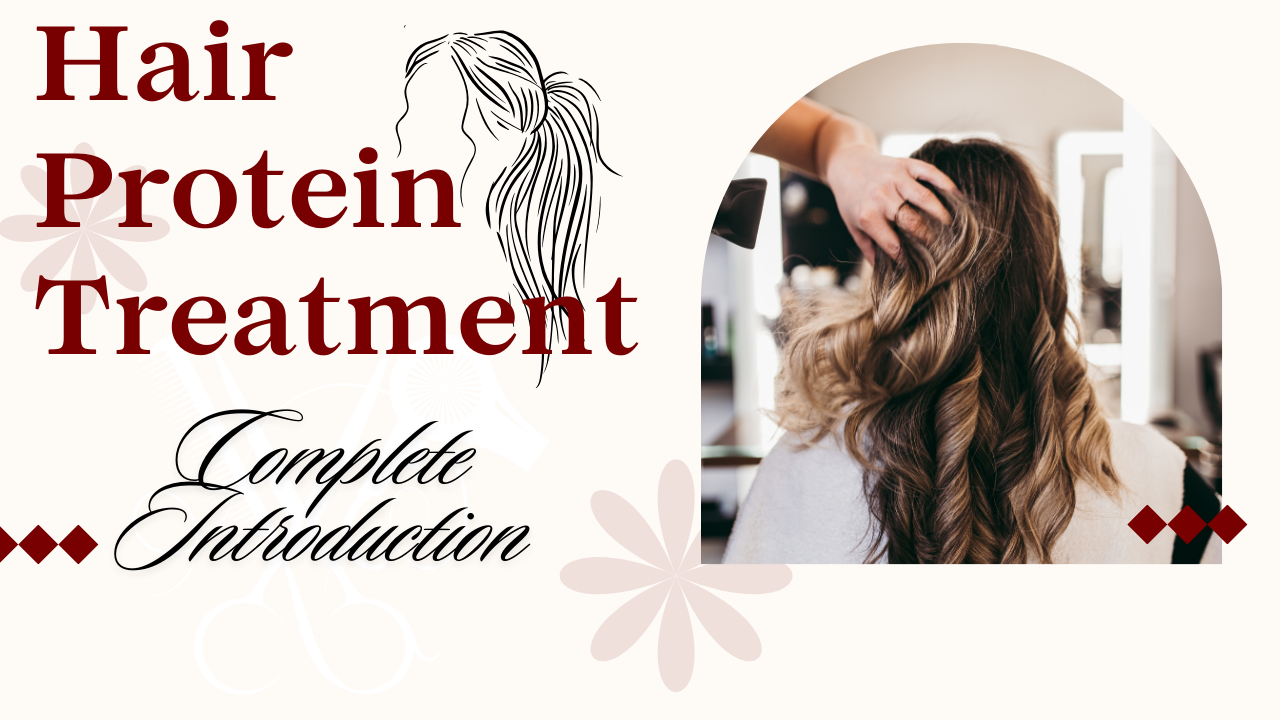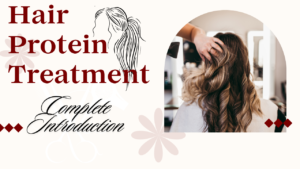Introduction to Hair Protein Treatment
Introduction to Hair Protein Treatment:
Introduction to Hair Protein Treatment: Is your hair feeling weak and breaking easily? Protein treats can be your hero! These quick solutions replenish proteins in hair, making them strong and shiny. Stay tuned to learn more about the benefits and how to boost your hair protein at home!
1. Understanding the importance of protein for hair
• What is hair made of?
• Why is protein important for healthy hair?
2. Common causes of protein deficiency in hair
• chemical treatment
• Heat Styling
• environmental factors
3. Symptoms of protein deficiency in hair
• Dryness and brittle hair
• excessive wear and tear
• Lack of elasticity
4. Benefits of Hair Protein Treatment
• Restores strength and elasticity
• Improves hair texture
• Increases shine of hair
5. Types of protein treatments
• Keratin treatment
• Collagen treatment
• Plant-based protein treatments
6. Steps Involved in Hair Protein Treatment
• Counseling and child analysis
• Pre-treatment preparation
• Protein Application
• Heating applications
• Washing and Conditioning
7. Care Tips for Maintaining Protein-Treated Hair
• Use sulphate-free shampoo
• Limit heat styling
• Protect hair from environmental damage
Best hair straightener related to Hair Protein Treatment linked below:
- Panasonic EH-HV11 Ceramic Hair Straightener
- Uliova Portable Ceramic Hair Straightening
- Babyliss Pro Nano Tourmaline Hair Straightener
Frequently Asked Questions (FAQ)
• What is the recommended frequency for hair protein treatments?
• Can protein treatments be done at home?
• Are protein treatments suitable for all hair types?
• How long do the results of protein treatment last?
• Are there any side effects of hair protein treatment?
For more hair treatment and care:
Hair Protein Treatment: Restoring Health and Vitality to Your Tresses
Hair protein treatment has become increasingly popular in recent years, hailed as a transformative solution for damaged and lackluster locks. In this comprehensive guide, we delve into the intricacies of hair protein treatment, exploring its benefits, steps involved, and essential aftercare tips.
Understanding the Importance of Protein for Hair
What is Hair Made of?
Keratin, a protein, makes up the majority of hair and provides each strand with its structural integrity.
Why Protein is Essential for Healthy Hair?
Protein plays a crucial role in maintaining hair strength, elasticity, and overall vitality. It helps repair damaged hair cuticles and promotes healthy growth.
Common Causes of Protein Loss in Hair
Exposure to chemical treatments, frequent heat styling, and environmental factors can strip the hair of its natural proteins, leading to damage and dullness.
Signs of Protein Deficiency in Hair
Signs of protein deficiency in hair include dryness, brittleness, excessive breakage, and a lack of elasticity.
Benefits of Hair Protein Treatments
Hair protein treatments offer a multitude of benefits, including restoring strength and elasticity, improving hair texture, and enhancing shine.
Types of Protein Treatments
Various types of protein treatments are available, including keratin treatments, collagen treatments, and plant-based protein treatments, catering to different hair needs and preferences.
Steps Involved in Hair Protein Treatment
Consultation and Hair Analysis
Before undergoing a protein treatment, it’s essential to consult with a hair specialist who can assess your hair’s condition and recommend the most suitable treatment.
Pre-Treatment Preparation
Preparation involves clarifying the hair to remove any buildup and ensuring that it is free from oils and residues.
Protein Application
The protein treatment is applied to the hair, focusing on areas that require the most repair and nourishment.
Heat Application
Heat is often used to help the protein penetrate the hair shaft effectively, maximizing its benefits.
Rinsing and Conditioning
After the treatment has been allowed to set, the hair is rinsed thoroughly, followed by conditioning to seal in moisture and enhance softness.
Aftercare Tips for Maintaining Protein-Treated Hair
To prolong the benefits of a protein treatment, it’s essential to follow a proper aftercare routine. This includes using sulfate-free shampoo, limiting heat styling, and protecting the hair from environmental damage.
Frequently Asked Questions (FAQs)
What is the recommended frequency for hair protein treatments?
The frequency of protein treatments depends on individual hair needs and the type of treatment used. However, it’s generally recommended to undergo treatments every 4-6 weeks for optimal results.
Can protein treatments be done at home?
While some protein treatments are available for home use, it’s advisable to seek professional guidance, especially for more intensive treatments like keratin.
Are protein treatments suitable for all hair types?
Yes, protein treatments can benefit all hair types, from fine and straight to curly and coarse. However, the type and intensity of the treatment may vary depending on the hair’s condition and texture.
How long do the results of protein treatments last?
The longevity of results varies depending on factors such as hair type, maintenance routine, and the specific treatment used. Generally, results can last anywhere from a few weeks to several months.
Are there any side effects of hair protein treatments?
While protein treatments are generally safe, some individuals may experience temporary side effects such as scalp irritation or sensitivity. It’s essential to consult with a professional and undergo a patch test before undergoing any treatment.
In conclusion
hair protein treatment offers a rejuvenating solution for damaged and weakened hair, restoring health, vitality, and beauty to your tresses. By understanding its benefits, undergoing the treatment process, and following proper aftercare, you can achieve luscious locks that exude strength and radiance.



2 thoughts on “Introduction to Hair Protein Treatment”